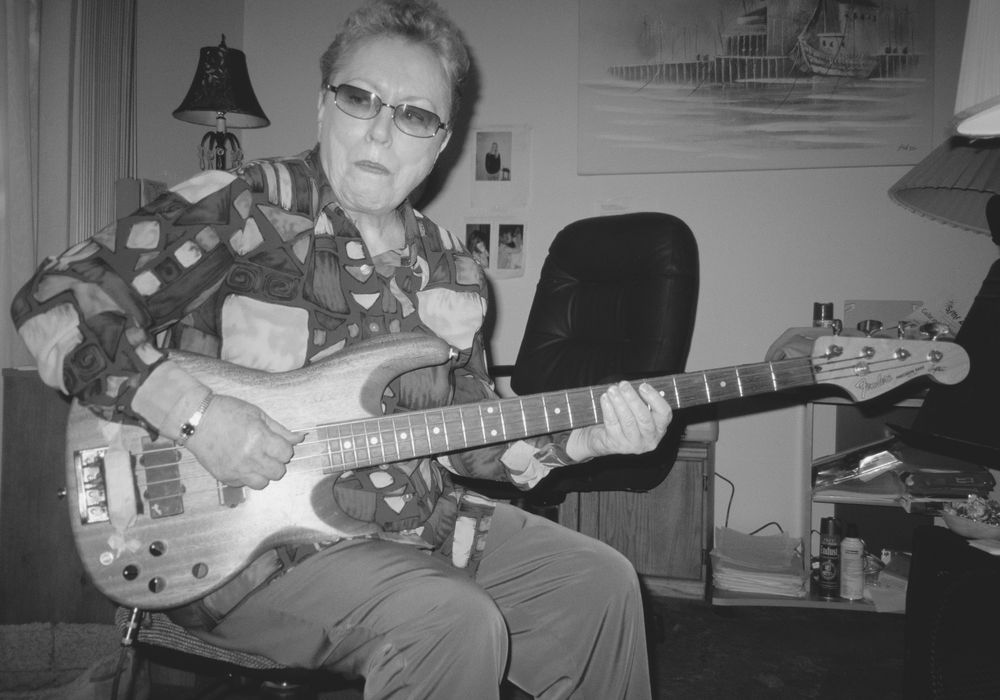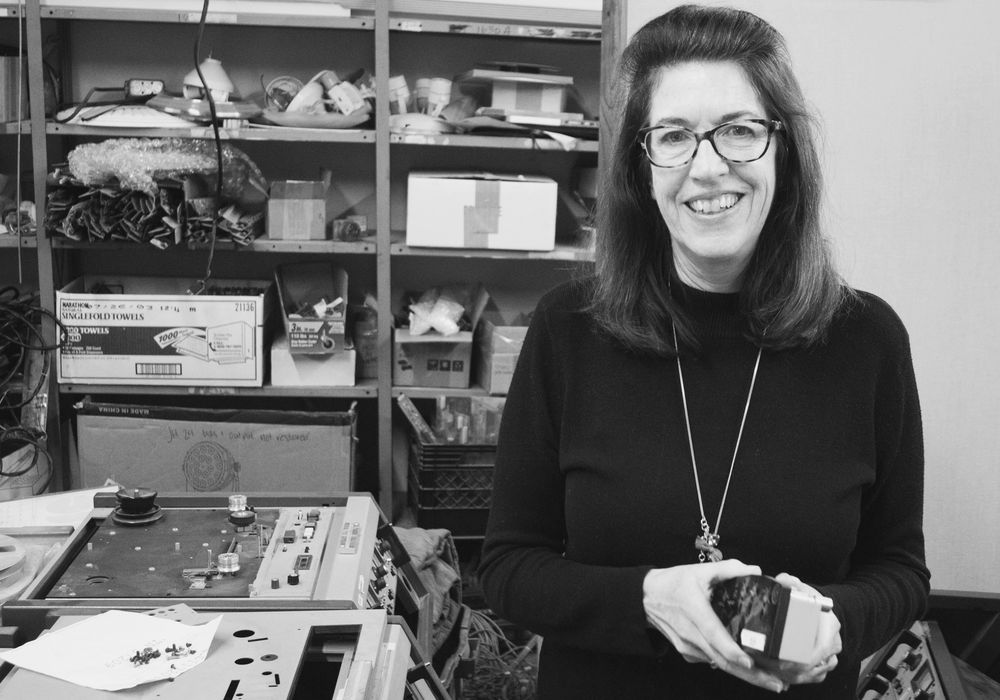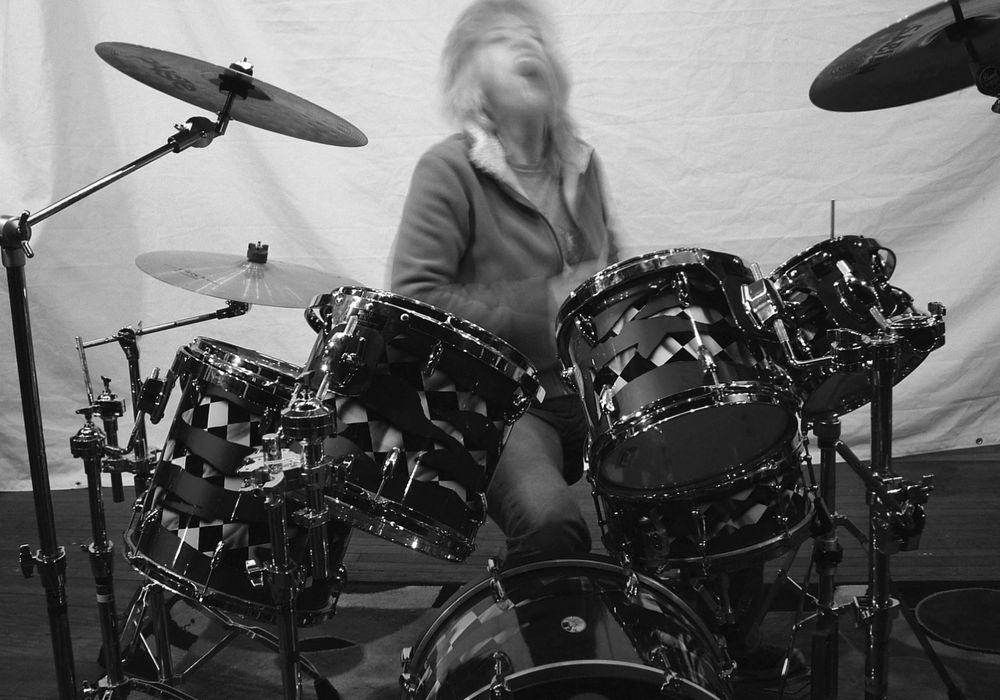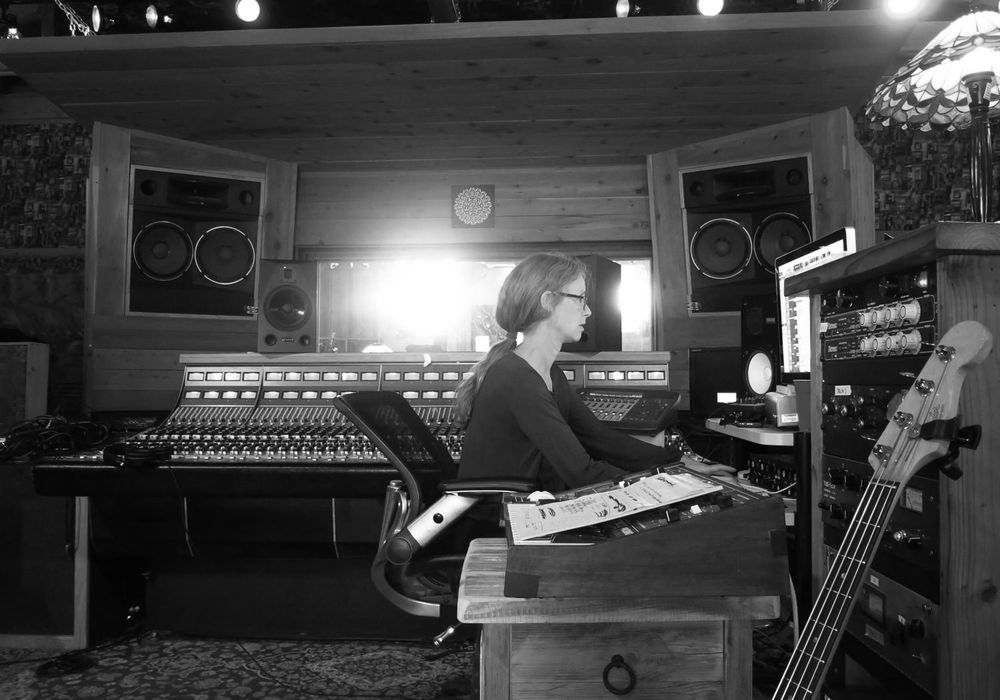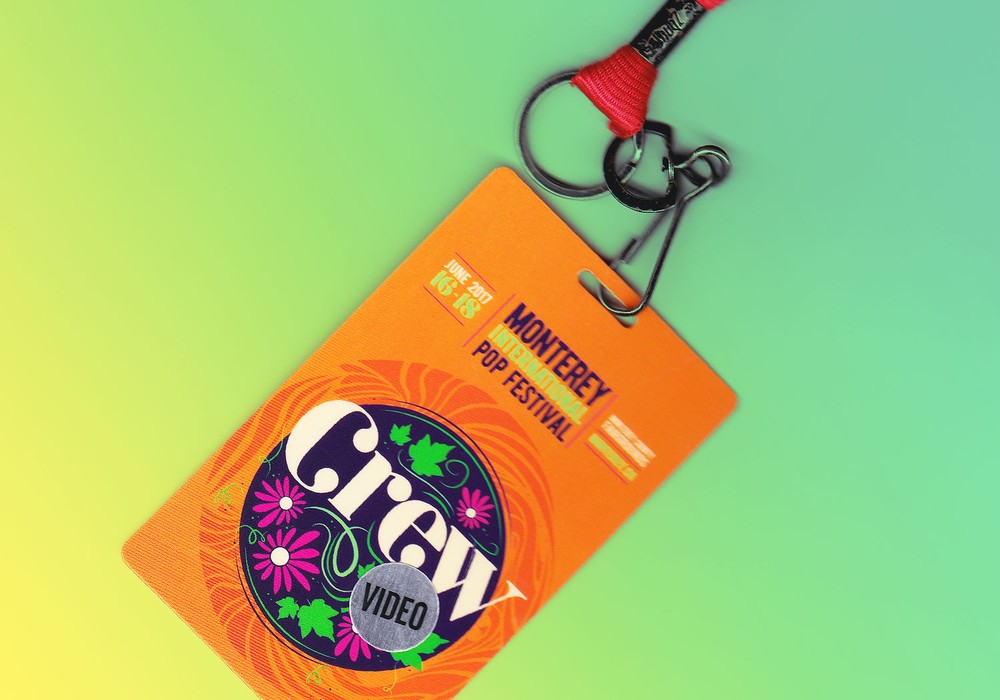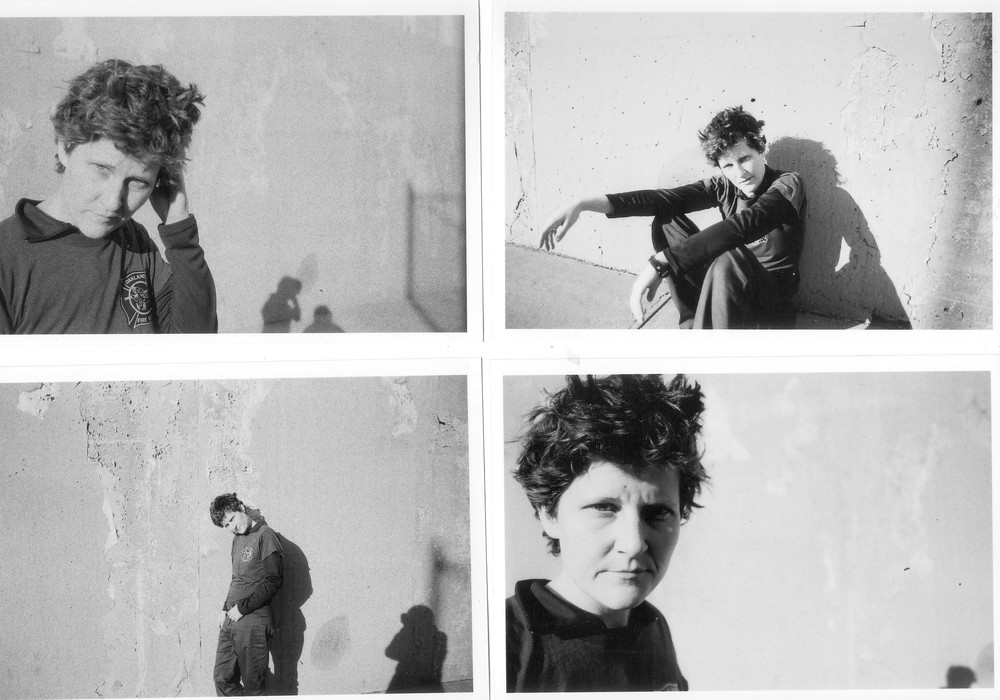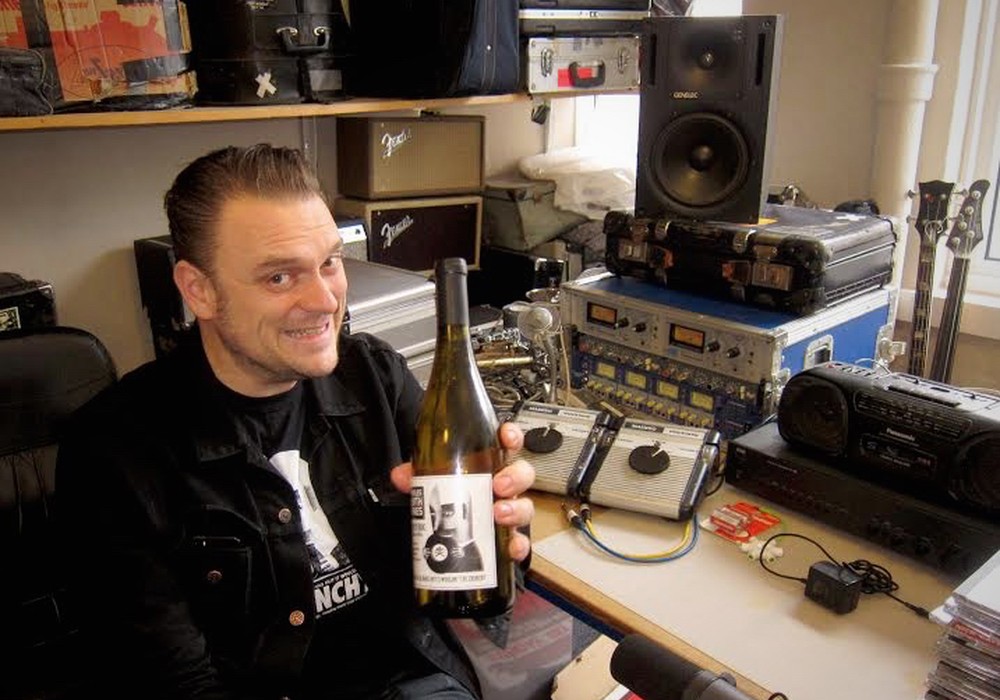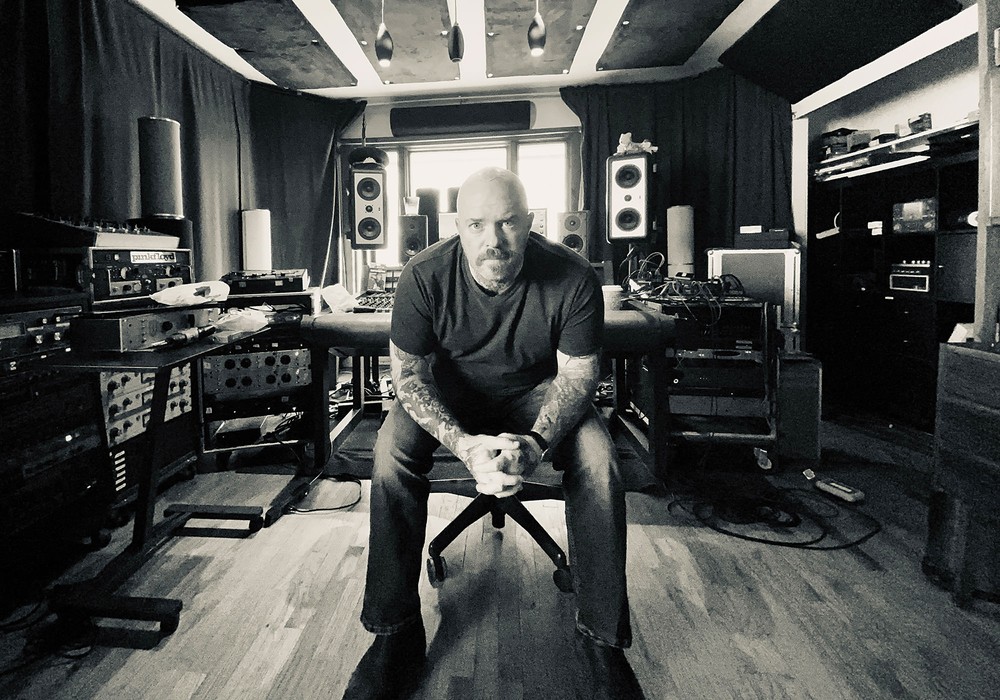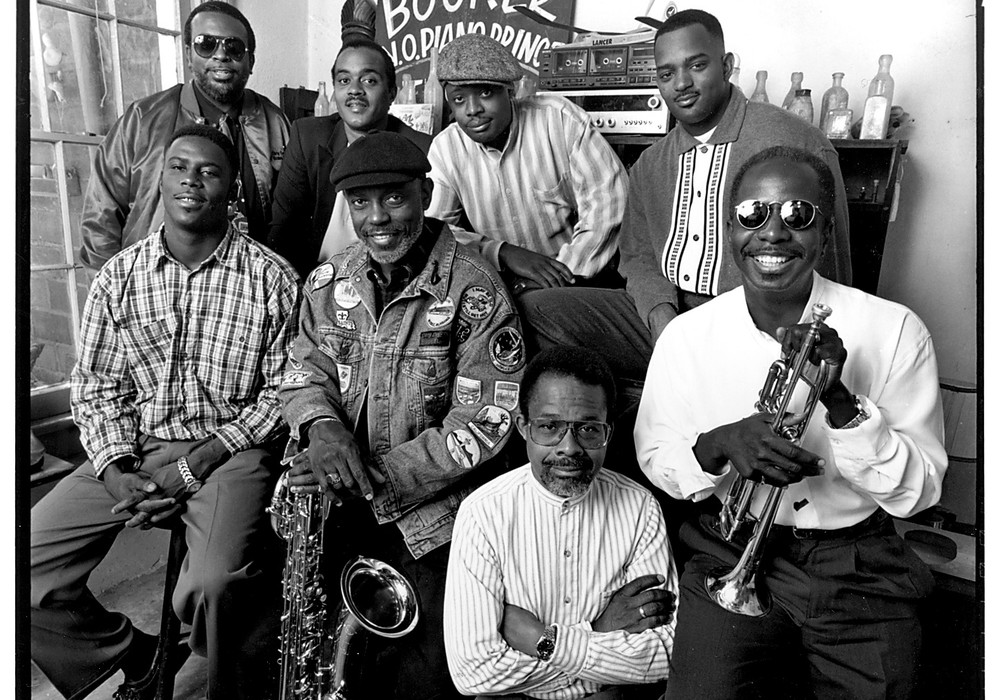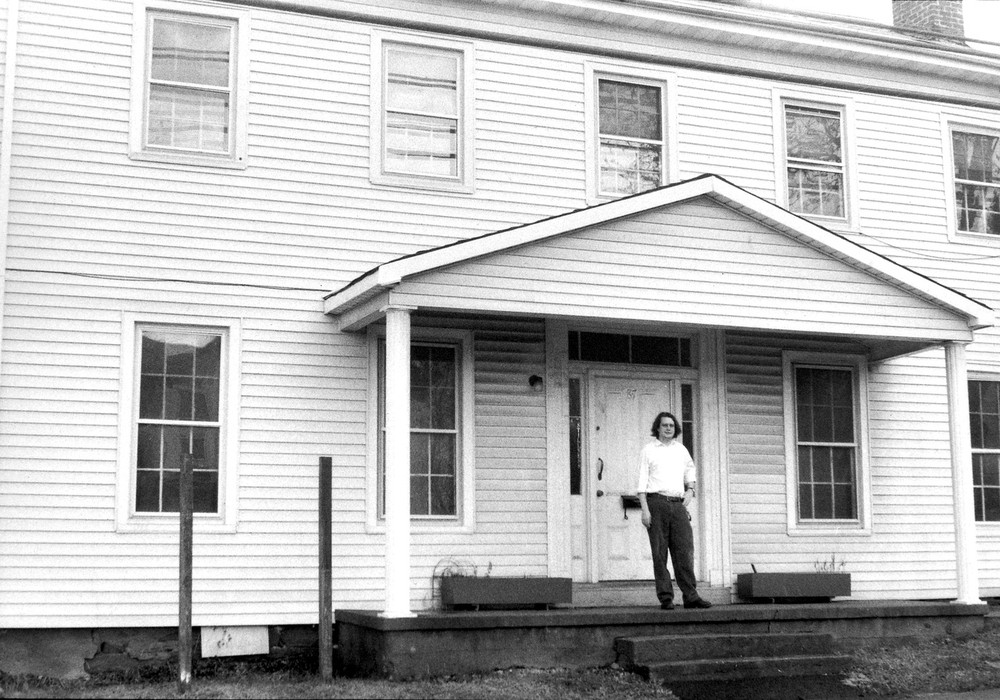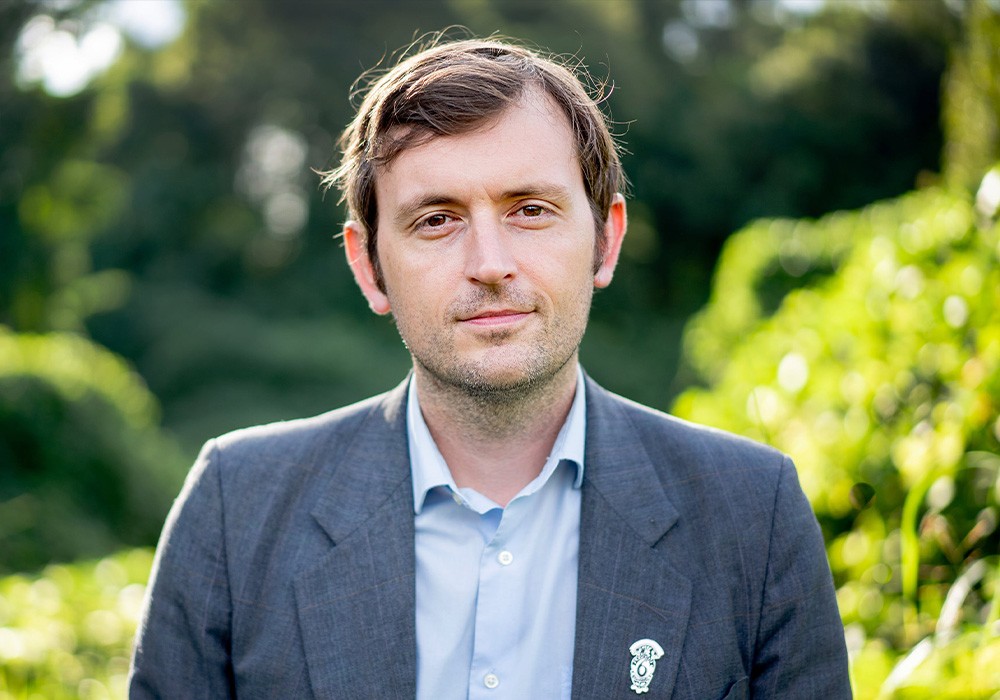Almost four years ago, after a 19-year run, the studio savvy group Stereolab went on hiatus. Here's a look at the co-founders, Laetitia Sadier and Tim Gane as well as their thoughts on recording and creativity in the studio.
Fresh off the release of her second solo album, Silencio, longtime Stereolab front woman Laetitia Sadier took a break from her US tour to discuss her albums' intricacies. Members of the French group Aquaserge helped record the album, including Julien Gasc, who along with Jim Elkington, (Horse's Ha and The Zincs) joined us to discuss Silencio's recording process.
As a vocalist, how did you approach recording and editing, in terms of both making sure you said what you wanted to say, as well as still allowing for spontaneity and life in the recording?
Laetitia Sadier: Well, it's quite fantastic with Pro Tools; we do three takes, maybe even five, and then we comp the best bits. We play it back and it's, "Oh, a good take." No one can hear that it's a cheeky composite. [laughter]
A little different than when you started making records 20 years ago.
LS: Yes! Dropping in and out on tape...
Do you feel like it's maybe too easy to rely on modern computer techniques?
LS: No, I think you still have to be good at what you do, and I don't think it takes away the difficulty. It does make it easier, in certain respects. For the drums, you can play, loop, and quantize it; but you can also change it so it's closer to the way a human would play. All these things really help, magically, but I think you still have to have good ideas to surprise people and be creative. You don't have a "creative" button in Logic. Sometimes it's downright cheating, but...
You're still responsible for the feeling. There's no shortcut for that.
LS: No. You still have to have intent in what you do for it to be the cement or the glue.
Julien, you tracked with an old Studer radio desk, through your converters, and then into Pro Tools. Was there a particular signal chain that you found yourself coming back to?
Julien Gasc: Yeah, the [AKG/Telefunken] D 19 mic. I think we used it for some takes on "Next Time You See Me." We were recording live and there was a good moment, but we were not sure.
LS: Yeah, because I couldn't play the part! [laughter]
JG: But finally we did it, and it was great. The room was full of mics. We had Rockwool walls that we built; those were great for playing live. It's always exciting to play a song live; it's full of adrenaline. Everybody's like cats, you know [holds up hands as if to have claws], like that. I like that, on that song in particular.
LS: It's true. There's a particular kind of pleasure in doing that, which exists nowhere else.
You've mentioned in the past that dreams play a big part in your writing. Does it ever seem as if a particular dream has been realized when you listen to a mix for the first time?
LS: It depends who's mixing. [laughter] I like working with Emma [Mario], who is a drummer and engineer. I handed in the Toulouse session to mix, and he has a lot of poetry in his mixing. It renders this kind of dream-like state. I don't have a precise idea, because I know if I start having expectations, very specific expectations... I know what I like, I know what I don't like. I go by that, and I trust the process. In the end I want to be surprised.
Jim Elkington: Ultimately I've been disappointed with any record that I've had all the decision making process on. I'm like, "Oh, I knew I was gonna do that."
JG: It's always tricky. Take an adult and a child; give them each a piece a paper and pen and tell them to make a drawing. The child will go [makes scribbling motion], and say, "Okay, I'm finished." The adult will go [pretends to be very meticulous] and there's no end with the detail. We have to be more childish with records and say, "It's done."
LS: Yeah. It's my first record ever that I wasn't there for the mixing.
Have you found software synths making their way into your recordings?
L: Jim's wife bought him an iPad. He wouldn't have bought one. [laughter] He downloaded the [Moog] Animoog app and showed it to me. It didn't sound like a Moog, it sounded like a proper instrument in its own right. That's what interested me; it had it's own personality.
The last track on the album ["Invitation au Silence"] is wonderfully surprising.
LS: I wanted there to be a track on the record that would explain what's it all about. Why Silencio? I just wanted to make things clear, and not leave people in darkness. When I was 20 I thought was cool to keep things mysterious and not communicate. But now I'm realizing it's much better to communicate what your intent is. So, [Aquaserge engineer] Audrey [Ginestet] took me to a church. I used to hate going to churches. I was brought up a Catholic; it was so oppressive and I would have a nervous breakdown each time I entered a church. I turned this around, with age, and now I actually enjoy walking into a church. Not necessarily for the religious aspect, but for the sacred aspect, the energetic aspect, and the quietness that can be found in a church. And the acoustics...
They can be quite beautiful...
LS: Yeah, [they're] particularly good for vocals. I asked Audrey if she would record me talking the text. I thought, "Okay, I'm going to say it in French, but I should also translate it in English."
The way that it ends is almost like a John Cage-ian silence, where you're listening to silence, but it's part of the art.
LS: Yes. The idea is to simply invite people to sit down, do nothing, reflect, and be. Because it's nice.
Over their19-yea rcareer,Tim Gane was arguably the closest thing Stereolab had to a creative director, providing the initial spark for nearly all their compositions, along with singer and co-writer Laetitia Sadier. Stereolab are one of the rare exceptions that have made the studio-as-instrument model work. Collaborators along the way included John McEntire [Tape Op #23], Jim O'Rourke [#16], Mouse on Mars [#46] and Sean O'Hagan. We talked to Tim Gane in his Berlin home to ask about the process of invention and collaboration.
What was Stereolab's initial influence?
Well, in the early '80s I was a big fan of Krautrock music — like Faust, Neu! and Can. I'd been in two bands, and I didn't want to do "just another band." I was looking for a way of combining the experimental with the commercial. The idea was a combination of naïve pop melodies melded with very simple rock minimalism. Our early stuff did sound quite different. It played to the proficiencies of the band, which was not very "musical," in a sense. Our innovation was to strip everything back.
Where did the love of the Farfisa organ come from?
The Farfisa was the creator of the basic Stereolab sound. Eventually we stopped using it as much, because it's so identifiable. It's got this natural distortion that covers up a lot of things! That's probably why it sounded so good. [laughs] It added a color and dimension to the band that we were looking for. Bass, guitar and drums sounded reedy on their own. We had bought a Farfisa Bravo at a charity shop, which was the cheapest. It's so primitive that if you played anything more than a major chord, the harmonics would begin to break up. For me what sounded good were two-note chords. Guitar and Farfisa chords were basically the sound of all those early Stereolab records.
When did you start recording with computers?
Dots and Loops, was the first time. There are no samples on that record; it's all us playing those loops, live as a band, together, and in real time. On Dots and Loops we started using samples on the computer; but they're samples of us playing. We had six weeks to record, and after two weeks we were done with pretty much everything. But then we had to edit everything, so that was another two weeks. The sound of the computer massively influenced the sound of that record, and it changed the way that we wrote songs. But after the album came out I didn't want to do it that way again.
Can you tell us about how creating the arrangements worked?
When we went into the studio, the songs were written in a very basic way. My thing is to allow any and all changes that are possible, while keeping my eye on the essence of the piece of music. Everything is free to be moved around, changed and added to. Guys like John [McEntire] and Jim [O'Rourke] are the perfect people to experiment with. We'd shift them, shape them, and follow the path of whatever seemed exciting. I might start a track with a rhythm on guitar, and Andy [Ramsay, drums, Tape Op #75 UK] could change it around and bring something entirely new to the table that I would have never thought of. It brings all sorts of new ideas.
You often used the same mixing credit: "Stereolab" or "the Groop."
I knew I was going to have to explain this. Those normally mean me, or sometimes me and Sean [O'Hagan]. It could also reference Laetitia and myself. It could also refer to [drummer] Andy [Ramsay] and me. It's not necessarily all the band. Especially when we were working in Chicago, we couldn't afford for everybody to be there all the time. So they generally came over, did their parts and then went back. We called whoever was there "the Groop." Oftentimes it would just mean me. The mixing process is absolutely the most important aspect of Stereolab songs. The songs don't exist as any permanent arrangement before the mixing. Every instrumental track is running all the way through [the song], from beginning to end. I remember reading a guide to recording once and they said, "You must have your song arranged. All your instruments must be organized before you get to your mix." That's exactly the opposite of what we've done. For us it comes together when we've worked through that final process. Just selecting, throwing away, adding.
What's inspiring you now?
If I have the right environment I can write music very, very fast. For instance, I've done two soundtracks. When I did the first of those soundtracks, around the same time as the last Stereolab record, I noticed how much more exciting it was for me than working on the album. The idea of doing another album, and then another, isn't enough for me anymore. I need an environment where I can do something new. It's great to have a new way of finding the ideas that you already have. When I'm applying my ideas to film, I've got that restriction of fitting it into a scene. It's very interesting to see how a new container changes your ideas. I think there's a lot of freedom in that.


